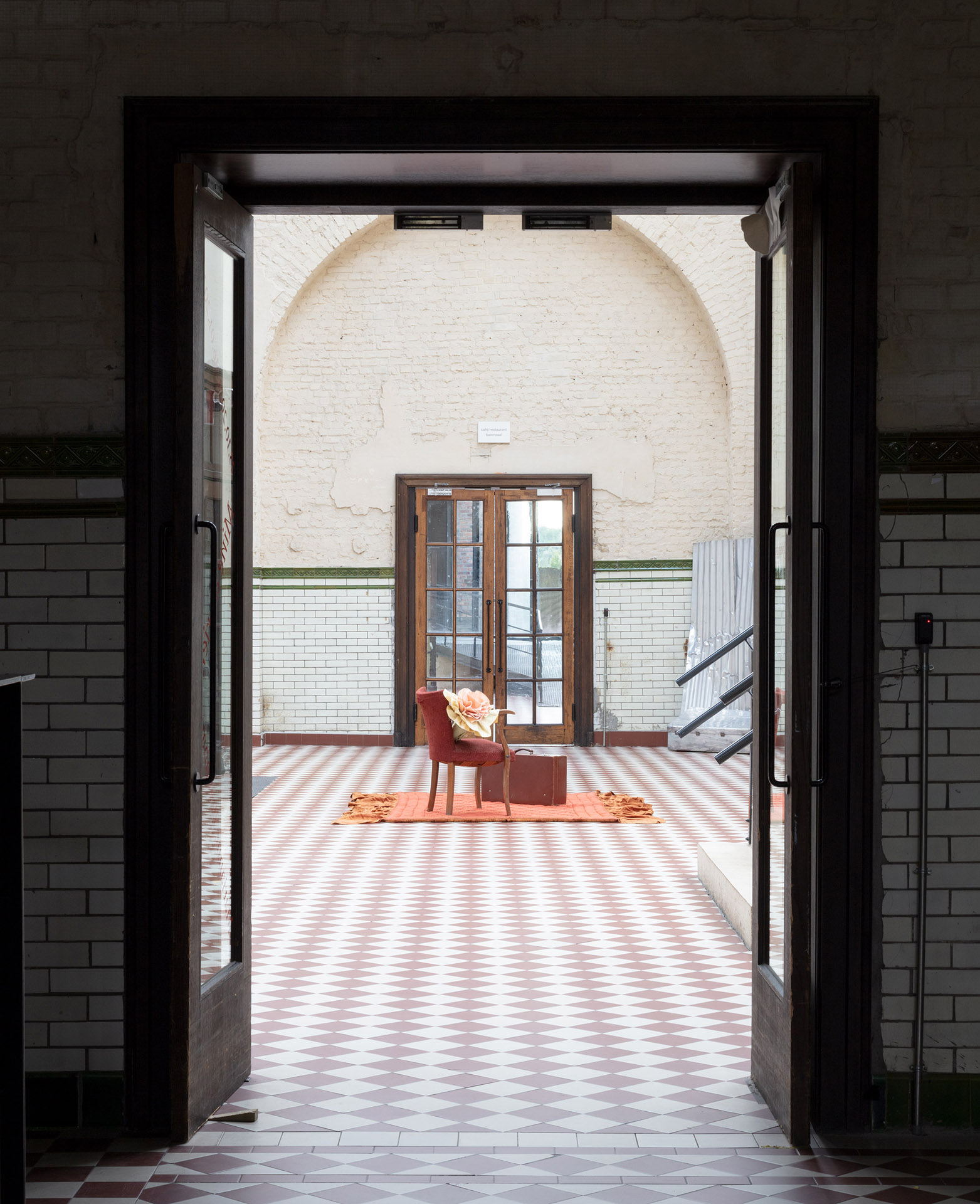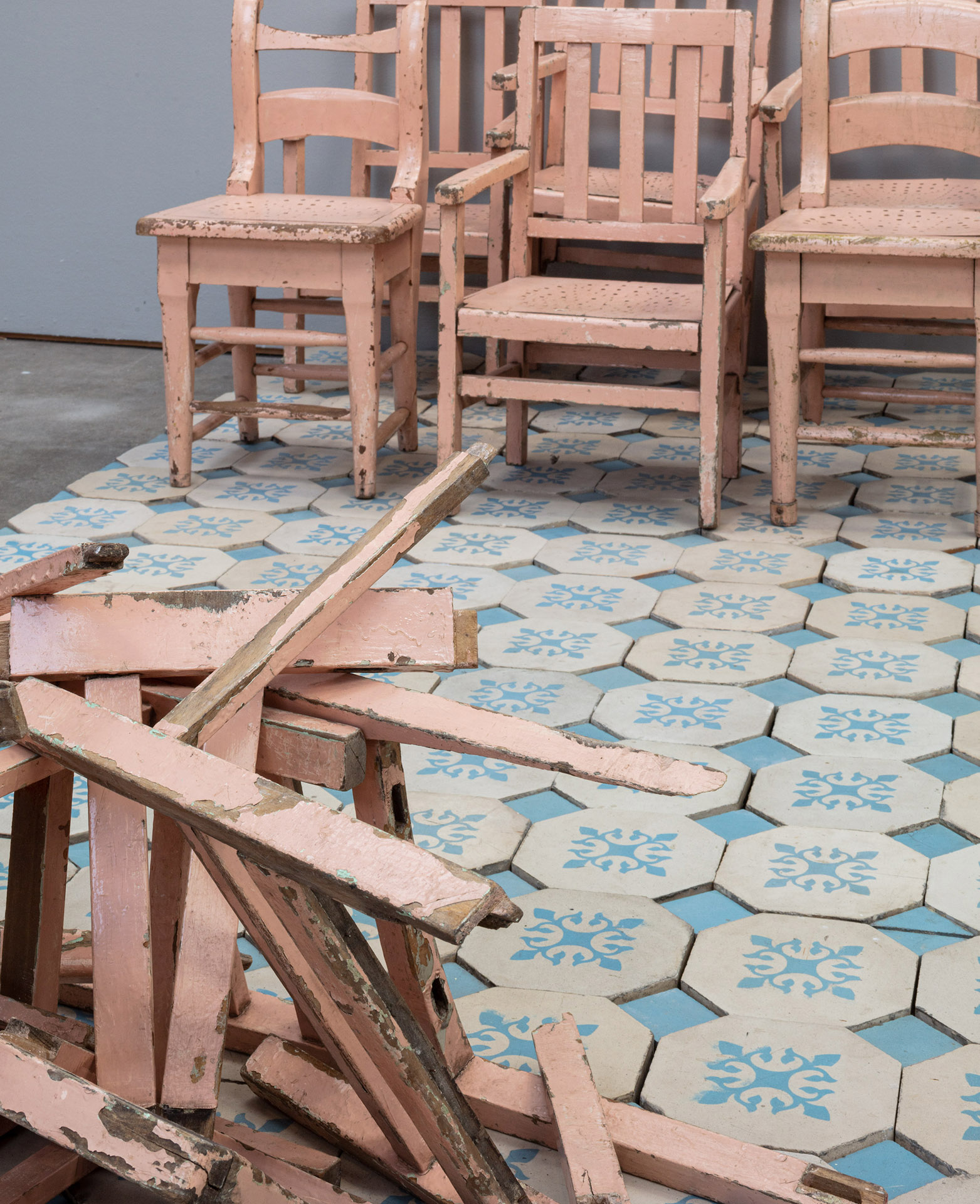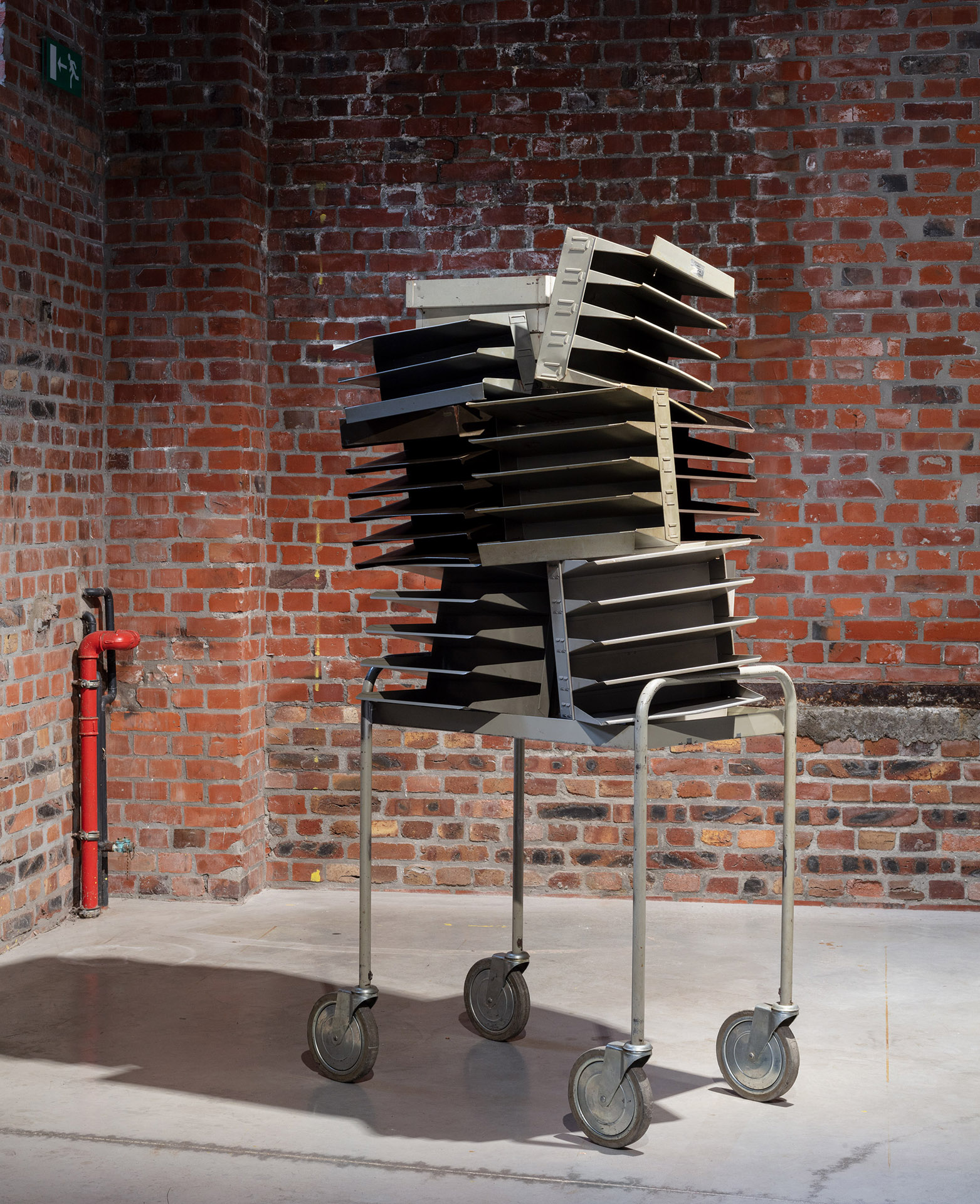Artist: Marianne Berenhaut
Exhibition title: Mine de rien
Venue: CIAP Kunstverein & C-mine, Genk, Belgium
Date: October 23, 2021 – January 16, 2022
Photography: all images copyright and courtesy of the artist and CIAP Kunstverein & C-mine, Genk
Note: Exhibition floor plan is available here
Marianne Berenhaut’s body of work, spanning over five decades and still expanding, eludes any attempt at a summary. It cannot ever be explained or fully grasped; it needs to be seen, experienced and felt to the bone. The exhibition at CIAP and C-mine presents a subjective choice from this generous oeuvre. Sculptures, installations, and collages made of objects found in the artist’s immediate surroundings are accompanied by a selection of archival materials, including previously unseen footage and newly commissioned documentation. Placed side by side, the works created years apart come into dialogue and reveal their lasting relevance. The expression ‘mine de rien’, borrowed for the title of this exhibition, describes someone acting casually, ‘as if nothing was at hand’, much like the works of Marianne. Hidden behind the facade of daily objects are memories and stories we all can relate to, but also experiences that remain deeply individual and, on some level, inaccessible.
La Ritournelle, the first work encountered by the visitor while still in the entrance hall, suggests a way of looking at the exhibition. In music theory, ‘ritornello’ stands for a musical passage that repeats throughout the piece and alternates with other, contrasting episodes. In Marianne’s practice at large, and in this exhibition in particular, certain motifs keep recurring, like a refrain. There is a figure of a woman. She is a mother, she is a bride, she is a child. A carer, a lover, a survivor, a mourner. She is working, laughing, dancing. She is leaving. This is an exhibition about a woman, all women, about life.
The very present, symbolically charged architecture of the former mine of Winterslag lends itself as a perfect setting to highlight specific facets of Marianne’s practice. Now a creative site, it used to be the heart of the extractive industry and a gravitational core of the cité, attracting newcomers to Genk. What better context to reflect on the subjects of care, labour, trauma, and healing, which surface, in a more or less direct way, throughout this body of work.
Marianne’s affection for the abandoned and the ordinary relates her art to that of other ‘archaeologists of the everyday,’ the artists like Arnaud, Kienholz, Rauschenberg, Hasior (strikingly, all male). This generation of artists turned their attention towards mundane objects and waste as a way of coming to terms with the new post-war realities. “Painful beauty created from the trash of the ordinary life”, Dubravka Ugrešić describes this kind of work in the Museum of Unconditional Surrender. In turn, Marianne’s sensibility rooted in female experience brings to mind artists like Szapocznikow or Bourgeois, who explored themes of trauma and resilience through a (proto-)feminist lens (as well as many contemporary artists, whose efforts prove that these subjects have not lost on their relevance). Still, Marianne’s diverse practice refuses to be pigeonholed. It expands in all directions, spanning at times tragic, almost romantic lyricism, critical feminist edge, neo-dada humour, and imaginative juxtapositions worthy of surrealism. And it keeps changing. Incorporating all these apparent contradictions is what makes it so true to life.
It is important to realise that even though one does not need to know the artist’s biography to access her work, her artistic practice and the context in which it unfolded have always been interlinked. The end of the 1960s, the decade of turmoil and change, of political and sexual revolution, brought about a crucial development in Marianne’s work. Her series Poupées-Poubelles resonates strongly with this broader socio-political context but also with Marianne’s personal life. Following a severe accident in 1969, the artist had to abandon traditional sculptural materials in favour of textile and objects. Such connection between micro and macro scale, private and public histories, is characteristic of her practice. It is one of the reasons why the work of Marianne is so relatable and allows every viewer to interpret it in their own way.
In the 1980s, the artist started to work with her characteristic assemblages of abandoned (or rather salvaged) objects sourced in thrift stores and from the streets. While in Poupées-Poubelles, these items have been cluttered together and given an anthropomorphic form, in Vie Privéé (that’s how Marianne calls this period), they become protagonists themselves. The artist chooses objects intuitively and arranges them without a clear intention. “I do not make works to be shown”, she admits, “but I want them to be seen”. Once the composition is there, it receives a title and with it, often, a story. Whose story, one may ask? Marianne’s own biography marked by the unspeakable trauma of Holocaust reverberates in her works, even if at times only subliminally. But it doesn’t define nor exhaust the work, which remains open and multidimensional.
Marianne has been working under the radar for many decades, as did many other women (artists). Dividing her time between her day job as a nurse and her artistic practice, she kept finding still new contexts to present her art outside of the institutional circuit: in her studio at a decommissioned train station, in the asbestos factory where she briefly worked, or in conjunction with feminist protests. Today, Marianne keeps working “between her bathroom and her kitchen”, in Brussels and London, on a new chapter of her oeuvre, playfully entitled Bits and Pieces. Her witty humour and refreshing outlook on life, her appreciation for the simplest occurrences, continue to inspire and humble. “We are wrong to believe that more painful things are more meaningful than happy things. Life comes and goes.”
-Alicja Melzacka
Mine de Rien is a collaboration between CIAP Kunstverein and C-mine. With kind support of the Flemish Community, the city of Genk, and CIAP members.

















































